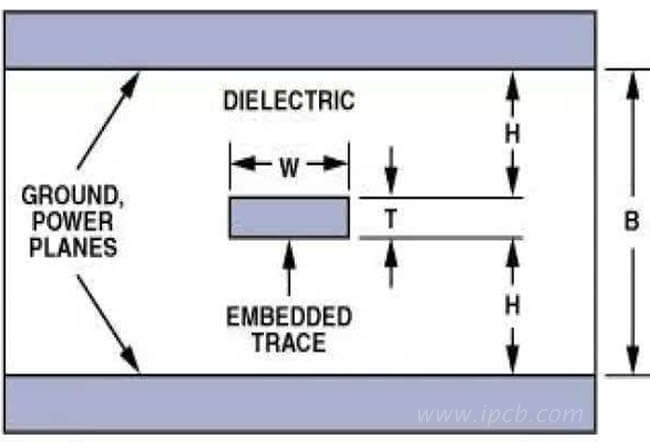Definition of Signal Transmission Line
(1) According to the electromagnetic wave principle,the shorter the wavelength (λ), the higher the frequency (f). The product of the two is the speed of light. That is, C = λ. F = 3 × 1010 cm/s.
(2) Although the signal transmission frequency of any component is very high, transmission through PCB wires reduces the original high transmission frequency or delay time.
Therefore,the shorter the wire length, the better.
(3) It is advantageous to increase the density of PCB wiring or shorten the wire diameter.However,with the acceleration of the component frequency or the shortening of the pulse period, the length of the lead wire approaches a certain range of the signal wavelength (speed). At this point, when the component is transmitted in the PCB wire,there will be a significant ‘distortion’.
(4) ipc-2141 3.4.4 states that when a signal is transmitted in a lead wire,if the length of the lead wire is close to 1/7 of the signal wavelength, then the lead wire is considered a signal transmission line.
(5) For example:
If the signal transmission frequency (f) of a component is 10 MHz and the length of the wire on the PCB is 50 cm, should the characteristic impedance control be considered?
Solution: C = λ. f = 3 × 1010 cm/s
λ = C/f = (3 × 1010 cm/s)/(1 × 107 /s ) = 3000cm
Line length/signal wavelength = 50/3000 = 1/60
Because: 1 / 60 ‘1 / 7’,this conductor is an ordinary conductor,so there is no need to consider the characteristic impedance.
In electromagnetic wave theory,Maxwell's formula tells us that the propagation speed of a sinusoidal signal in a dielectric,vs,is proportional to the speed of light,C,and inversely proportional to the dielectric constant of the transport medium.
VS = C/√εr
When ε r = 1, the signal travels at the speed of light, i.e., 3×1010 cm/s.The signal travels at the speed of light when εr = 1, i.e.,3×1010 cm/s.

PCB Characteristic Impedance
2.Transmission Rate and Dielectric Constant
Signal Transmission Velocity for Different Plates at 30MHz
Dielectric Constant of Dielectric Material TG (°C) Signal Transmission Rate (M/μs)
Vacuum / 1.0 300.00
Polytetrafluoroethylene / 2.202.26
Thermosetting polypropylene ether 210 2.5189.74
Cyanate resin 225 3.0 173.21
Polytetrafluoroethylene resin + E glass cloth / 2.6186.25
Cyanate ester resin+Glass cloth 225 3.7155.96
Polyimide+Glass Cloth 230 4.5141.42
Quartz / 3.9 151.98
Epoxy glass cloth 130±54.7138.38
Aluminium / 9.0 100.00
From the above table it can be seen that as the dielectric constant (εR) increases,the rate of signal transmission through the dielectric material decreases.In order to obtain higher signal transmission speed,high characteristic impedance values are required for high characteristic impedance,low dielectric constant (ε R) materials must be selected and the dielectric constant (ε R) of Teflon should be very fast.
FR-4 board is composed of epoxy resin and E-grade glass cloth, and its dielectric constant (ε R) is 4.7.The signal transmission speed is 138 m/μs.The dielectric constant (ε R) can be easily changed by changing the resin relationship.